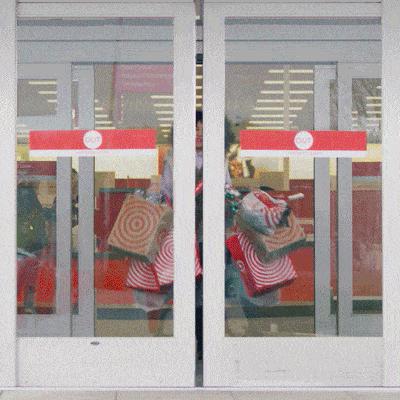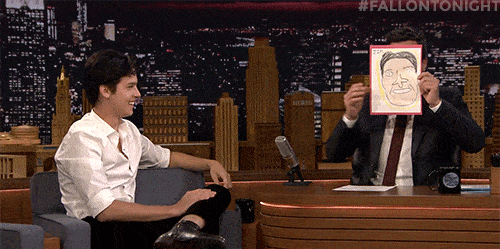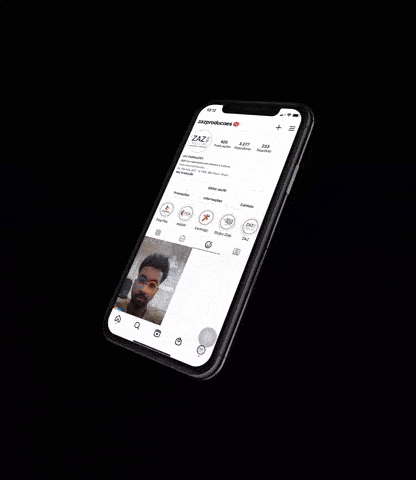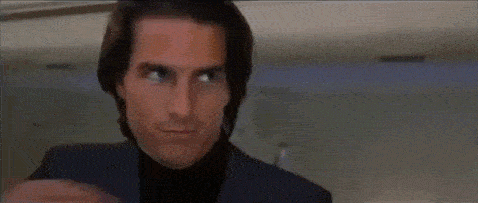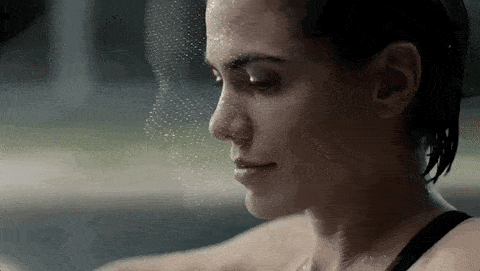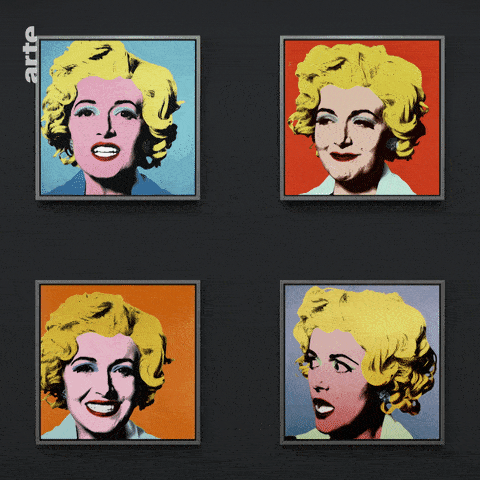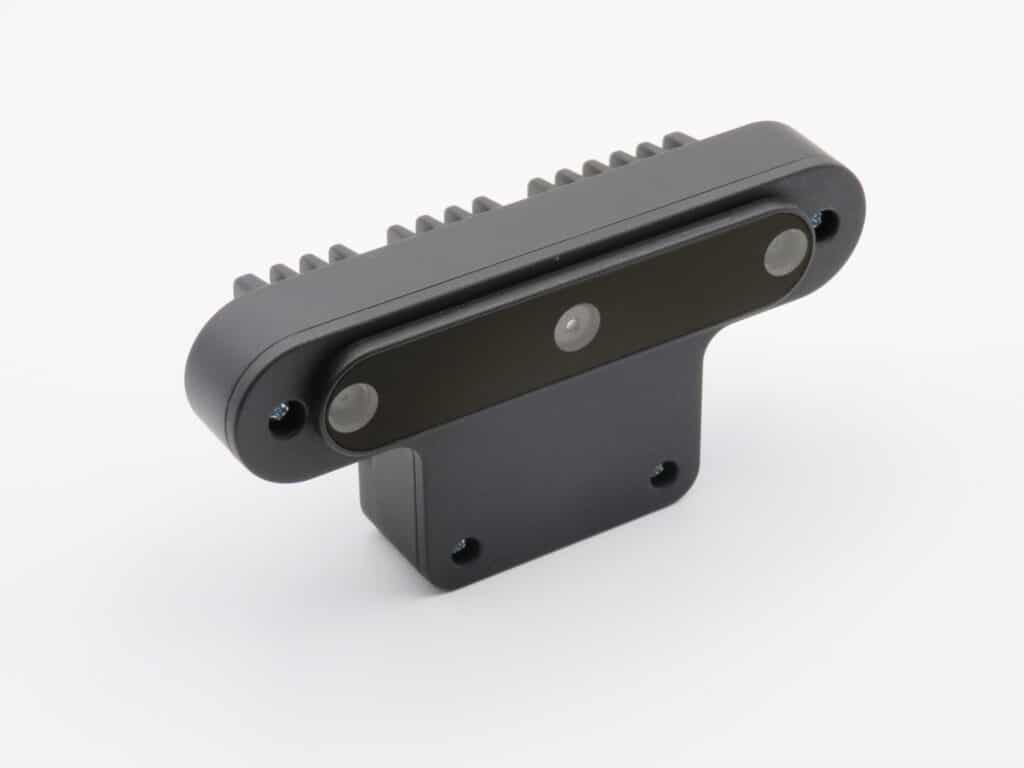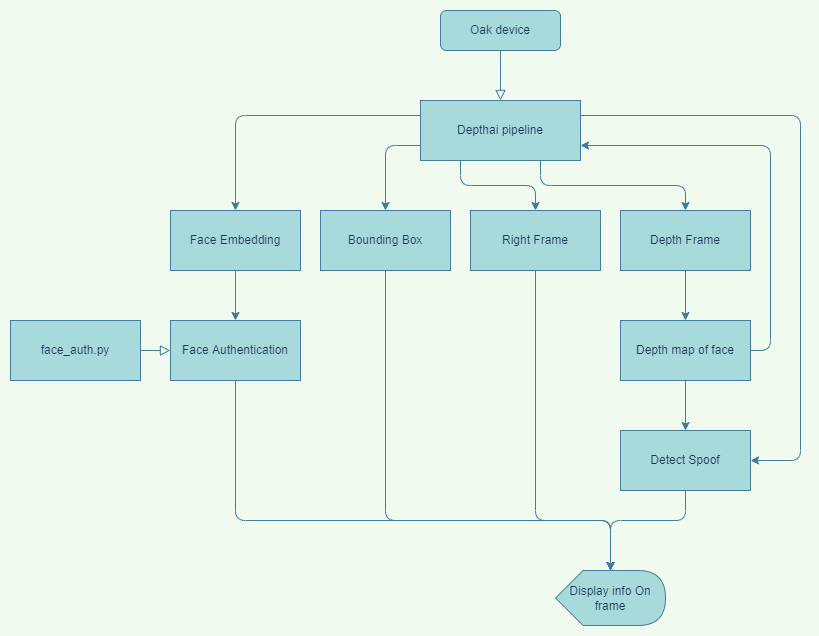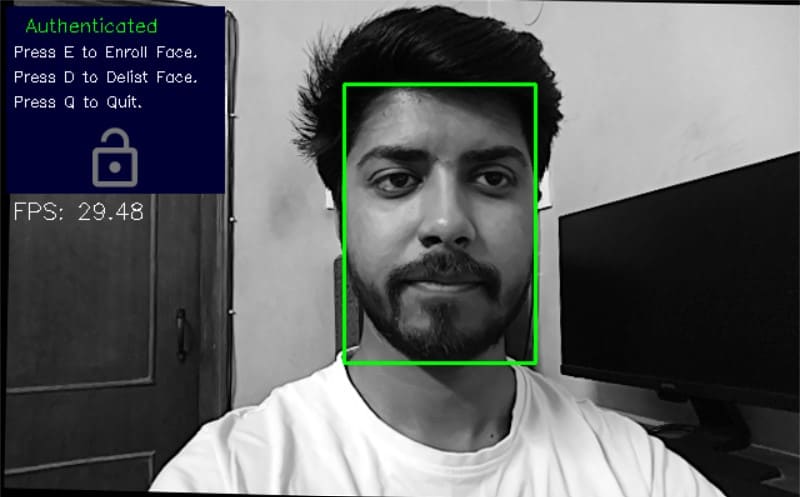In this article, we will learn the pros and cons of using Face Recognition as an authentication method. We will also see how it can be spoofed and the methods that can be used to detect the spoofing attempt.
- Introduction
- Face Recognition in Authentication (Pros and Cons)
- Face Recognition
- How Facial Recognition Works
- Types of Spoofing Attempts
- Techniques to Prevent Spoofing
- Our Approach
- Implementation
- Demo
- Where it Fails
- Future Improvements
- Conclusions
1. Introduction
Imagine a scenario where you are carrying multiple bags in both your hands and even on your arms, you come to the door of your apartment building that has an access control system in which you have to put in a password or fingerprint to open it, so you put down your bags and put in your password or touch your fingerprint and then pick them up again and then walk through the door.
Now, consider an alternate situation. You are again carrying all those bags but now when you come to the door of your apartment building, you just have to look into the camera at the door, and Voila! the door unlocks, and you walk in.
Doesn’t the second option sound quicker and hassle-free? That’s the beauty of using your face for authentication; it removes 1 to 2 steps from the authentication process but makes your life a little less frustrating and more convenient.
Also, in the present global pandemic, it helps you avoid touching surfaces such as authentication systems multiple people use.
2. Face Recognition in Authentication (Pros and Cons)
Now, the question is, if there are other authentication methods, such as passwords and fingerprints, why would we use face recognition?
If the above examples were not enough to convince you to try face authentication, let’s compare it with other popular authentication methods.
| Password | Fingerprint | Only Facial recognition | |
| Security | High | Moderate | Low |
| Memorability | Low | High | High |
| Ease of use | Low | moderate | High |
| Identify theft | High | Low | Low |
We can see that the main benefit of face recognition over other authentication methods is convenience. The major drawback is security.
So, how can we tackle that? Let’s first understand what Face Recognition is and how it works.
3. Face Recognition
Face recognition is a way to identify and recognize individuals with the help of their unique facial features.
It has many applications in numerous fields, such as medical services, law enforcement, customer experience, and biometric authentication.
4. How Facial Recognition Works
The main working principle in face recognition is that each face is unique. A person can be identified based on those unique features of the face
Biometric Man Facial Recognition Identify Face
On identifying the key features of a face, they can be represented as a feature embedding of that face; you can think of it as a faceprint of that person similar to a unique fingerprint.
Now, the faceprint can be matched against other faceprints to check how similar they are, and based on the similarity of the faceprints, we can say if it’s the same person or not.
These are the following steps involved in face recognition:
1. Face Detection
A face is first detected in the frame of the camera. This can be done with different face detection methods such as Viola-Jones, HOG, or CNN.
2. Calculate feature embedding (faceprint)
The next step is to identify the key features of the face and represent them as a feature embedding which will be the unique identifier of the face. This can be done using pre-trained Face recognition models like ArcFace
3. Match the feature embeddings
The final step is to match the feature embedding of the face with the feature embedding already saved in the system. If they are similar enough, we can confidently say that it belongs to the same person.
5. Types of Spoofing Attempts
There are multiple ways to fool face authentication systems. The popular approaches are
1. 2d Image attack
In this, the attacker tries to bypass the authentication by showing an image of the face of the authorized person. This is the most primitive attack, and any face authentication system with no spoof prevention measure can easily be bypassed by it.
2. 2d video attack
In this, the attacker tries to bypass the authentication by showing a video of the face of the authorized person to the authentication system. This differs from the image attack because it can bypass the liveliness detection anti-spoofing systems as the face appears to be moving and life-like.
3. 3d print/mask attack
This is a more advanced spoofing method in which the attacker attempts to recreate the 3d features of the real face using a facemask or, as the upcoming technology allows, a 3d print of the real face. This kind of attack is tough to detect and can bypass the anti-spoofing measures depending on the depth info of the face.
6. Techniques to Prevent Spoofing – Anti Spoofing Face Recognition
Different spoofing attempts require different prevention methods
1. Depth estimation:
Depth estimation can be used as a spoof detection method for image/Video attacks. It identifies the differences between the depth map of a 2-dimensional image or video and a real 3-dimensional face. We will implement this method in the latter part of the post.
2. Liveness detection:
This method of detecting a spoof is effective against image attacks and face 3dPrint attacks. It attempts to identify a real face by detecting the natural movements of the facial features, such as blinking and smiling.
7. Our Approach
Let’s see what it takes to create our own Anti-spoofing authentication system.
In our implementation of Anti-spoofing Face Recognition, we will use the OAK-D device to capture the video frames and the depth map of the surrounding. We will create a DepthAI pipeline and deploy pre-trained models available on the OpenModelZoo to detect a face in an image frame and do facial recognition. We will also get the depth map of the face and run it through a trained custom model running on the OAK device to identify spoofs.
Let’s see what OAK and DepthAi are.
1. OAK-D
OAK-D (OpenCV AI Kit – Depth) is a spatial AI camera which means it can make decisions based on not just the visual perception of the surroundings but also the depth perception.
It achieves depth perception using a pair of stereoscopic cameras to estimate how far things are. The camera has an Intel Movidius VPU to power the vision and AI processing.
2. DepthAI
DepthAI is a cross-platform API used to interact with and program the OAK cameras to harness all its capabilities. Using it, we can create complex vision systems and even run custom model inferences on the device.
We have gone in depth about OAK-D and DepthAI in the series of posts, the link to which you can find below.
- Introduction to OAK-D and DepthAI
- Stereo Vision and Depth Estimation using OpenCV AI Kit
- Object detection with depth measurement using pre-trained models with OAK-D
- DepthAI Pipeline Overview: Creating a Complex Pipeline
8. Implementation
Let’s dive in and implement our system.
1. Prerequisites
- Python Environment
- OAK-D device
- Following Python modules
1 2 3 4 | depthai == 2.10.0.0opencv-contrib-python == 4.5.2.54blobconverter == 1.2.9scipy == 1.7.3 |
2. Code
Import Libraries
1 2 3 4 5 6 7 | import cv2import numpy as npimport depthai as daiimport osimport timefrom face_auth import enroll_face, delist_face, authenticate_embimport blobconverter |
Create the DepthAI Pipeline
We create the DepthAI pipeline to get the depth map, and the right camera frame and to run all neural network models for face detection, face recognition, and depth classification.
We are using the “face-detection-retail-0004” model for face detection and the “Sphereface” model for face recognition. Both of the pre-trained models are available on the Open Model Zoo.
For spoof detection. We have trained a simple CNN binary classifier using Keras to classify between depth maps of real and spoofed faces.


As DepthAI and OAK do not natively support the inference of Keras models, we use the blob converter to convert the trained model to the blob format supported by DepthAI so we can run it on the OAK device.

DepthAI Pipeline
1 2 3 4 5 6 7 8 9 10 11 12 13 14 15 16 17 18 19 20 21 22 23 24 25 26 27 28 29 30 31 32 33 34 35 36 37 38 39 40 41 42 43 44 45 46 47 48 49 50 51 52 53 54 55 56 57 58 59 60 61 62 63 64 65 66 67 68 69 70 71 72 73 74 75 76 77 78 79 80 81 82 83 84 85 86 87 88 89 90 91 92 93 94 95 96 97 98 99 100 101 102 103 104 105 106 107 108 109 110 111 112 113 114 115 116 117 118 119 120 121 122 123 124 125 126 127 128 129 130 131 132 133 134 135 136 137 138 139 140 141 | # Define Depth Classification model input sizeDEPTH_NN_INPUT_SIZE = (64, 64)# Define Face Detection model name and input size# If you define the blob make sure the DET_MODEL_NAME and DET_ZOO_TYPE are NoneDET_INPUT_SIZE = (300, 300)DET_MODEL_NAME = "face-detection-retail-0004"DET_ZOO_TYPE = "depthai"det_blob_path = None# Define Face Recognition model name and input size# If you define the blob make sure the REC_MODEL_NAME and REC_ZOO_TYPE are NoneREC_MODEL_NAME = "Sphereface"REC_ZOO_TYPE = "intel"rec_blob_path = None# Create DepthAi pipelinedef create_depthai_pipeline(): # Start defining a pipeline pipeline = dai.Pipeline() # Define a source - two mono (grayscale) cameras left = pipeline.createMonoCamera() left.setResolution(dai.MonoCameraProperties.SensorResolution.THE_400_P) left.setBoardSocket(dai.CameraBoardSocket.LEFT) right = pipeline.createMonoCamera() right.setResolution(dai.MonoCameraProperties.SensorResolution.THE_400_P) right.setBoardSocket(dai.CameraBoardSocket.RIGHT) # Create a node that will produce the depth map depth = pipeline.createStereoDepth() depth.setConfidenceThreshold(200) depth.setOutputRectified(True) # The rectified streams are horizontally mirrored by default depth.setRectifyEdgeFillColor(0) # Black, to better see the cutout depth.setExtendedDisparity(True) # For better close range depth perception median = dai.StereoDepthProperties.MedianFilter.KERNEL_7x7 # For depth filtering depth.setMedianFilter(median) # Linking mono cameras with depth node left.out.link(depth.left) right.out.link(depth.right) # Create left output xOutRight = pipeline.createXLinkOut() xOutRight.setStreamName("right") depth.rectifiedRight.link(xOutRight.input) # Create depth output xOutDisp = pipeline.createXLinkOut() xOutDisp.setStreamName("disparity") depth.disparity.link(xOutDisp.input) # Create input and output node for Depth Classification xDepthIn = pipeline.createXLinkIn() xDepthIn.setStreamName("depth_in") xOutDepthNn = pipeline.createXLinkOut() xOutDepthNn.setStreamName("depth_nn") # Define Depth Classification NN node depthNn = pipeline.createNeuralNetwork() depthNn.setBlobPath("data/depth-classification-models/depth_classification_ipscaled_model.blob") depthNn.input.setBlocking(False) # Linking xDepthIn.out.link(depthNn.input) depthNn.out.link(xOutDepthNn.input) # Convert detection model from OMZ to blob if DET_MODEL_NAME is not None: facedet_blob_path = blobconverter.from_zoo( name=DET_MODEL_NAME, shaves=6, zoo_type=DET_ZOO_TYPE ) # Create Face Detection NN node faceDetNn = pipeline.createMobileNetDetectionNetwork() faceDetNn.setConfidenceThreshold(0.75) faceDetNn.setBlobPath(facedet_blob_path) # Create ImageManip to convert grayscale mono camera frame to RGB copyManip = pipeline.createImageManip() depth.rectifiedRight.link(copyManip.inputImage) # copyManip.initialConfig.setHorizontalFlip(True) copyManip.initialConfig.setFrameType(dai.RawImgFrame.Type.RGB888p) # Create ImageManip to preprocess input frame for detection NN detManip = pipeline.createImageManip() # detManip.initialConfig.setHorizontalFlip(True) detManip.initialConfig.setResize(DET_INPUT_SIZE[0], DET_INPUT_SIZE[1]) detManip.initialConfig.setKeepAspectRatio(False) # Linking detection ImageManip to detection NN copyManip.out.link(detManip.inputImage) detManip.out.link(faceDetNn.input) # Create output steam for detection output xOutDet = pipeline.createXLinkOut() xOutDet.setStreamName('det_out') faceDetNn.out.link(xOutDet.input) # Script node will take the output from the face detection NN as an input and set ImageManipConfig # to crop the initial frame for recognition NN script = pipeline.create(dai.node.Script) script.setProcessor(dai.ProcessorType.LEON_CSS) script.setScriptPath("script.py") # Set inputs for script node copyManip.out.link(script.inputs['frame']) faceDetNn.out.link(script.inputs['face_det_in']) # Convert recognition model from OMZ to blob if REC_MODEL_NAME is not None: facerec_blob_path = blobconverter.from_zoo( name=REC_MODEL_NAME, shaves=6, zoo_type=REC_ZOO_TYPE ) # Create Face Recognition NN node faceRecNn = pipeline.createNeuralNetwork() faceRecNn.setBlobPath(facerec_blob_path) # Create ImageManip to preprocess frame for recognition NN recManip = pipeline.createImageManip() # Set recognition ImageManipConfig from script node script.outputs['manip_cfg'].link(recManip.inputConfig) script.outputs['manip_img'].link(recManip.inputImage) # Create output stream for recognition output xOutRec = pipeline.createXLinkOut() xOutRec.setStreamName('rec_out') faceRecNn.out.link(xOutRec.input) recManip.out.link(faceRecNn.input) return pipeline |
Script.py
In the above pipeline, we have used a Script node that will take the output from the face detection NN as an input and set ImageManipConfig for face recognition NN
1 2 3 4 5 6 7 8 9 10 11 12 13 14 15 16 17 18 19 20 21 22 23 24 25 26 27 28 29 30 31 32 33 34 35 36 37 38 39 | import time# Correct the bounding boxdef correct_bb(bb): bb.xmin = max(0, bb.xmin) bb.ymin = max(0, bb.ymin) bb.xmax = min(bb.xmax, 1) bb.ymax = min(bb.ymax, 1) return bb# Main loopwhile True: time.sleep(0.001) # Get image frame img = node.io['frame'].get() # Get detection output face_dets = node.io['face_det_in'].tryGet() if face_dets and img is not None: # Loop over all detections for det in face_dets.detections: # Correct bounding box correct_bb(det) node.warn(f"New detection {det.xmin}, {det.ymin}, {det.xmax}, {det.ymax}") # Set config parameters cfg = ImageManipConfig() cfg.setCropRect(det.xmin, det.ymin, det.xmax, det.ymax) cfg.setResize(96, 112) # Input size of Face Rec model cfg.setKeepAspectRatio(False) # Output image and config node.io['manip_cfg'].send(cfg) node.io['manip_img'].send(img) |
Helper Functions
We use the overlay_symbol and display_info function to display the Lock/Unlock symbol and other information on the output frame.
1 2 3 4 5 6 7 8 9 10 11 12 13 14 15 16 17 18 19 20 21 22 23 24 25 26 27 28 29 30 31 32 33 34 35 36 37 38 39 40 41 42 43 44 45 46 47 48 49 50 51 52 53 54 55 56 57 58 59 60 61 | # Load image of a lock in locked positionlocked_img = cv2.imread(os.path.join('data', 'images', 'lock_grey.png'), -1)# Load image of a lock in unlocked positionunlocked_img = cv2.imread(os.path.join('data', 'images', 'lock_open_grey.png'), -1)# Overlay lock/unlock symbol on the framedef overlay_symbol(frame, img, pos=(65, 100)): """ This function overlays the image of lock/unlock if the authentication of the input frame is successful/failed. """ # Offset value for the image of the lock/unlock symbol_x_offset = pos[0] symbol_y_offset = pos[1] # Find top left and bottom right coordinates # where to place the lock/unlock image y1, y2 = symbol_y_offset, symbol_y_offset + img.shape[0] x1, x2 = symbol_x_offset, symbol_x_offset + img.shape[1] # Scale down alpha channel between 0 and 1 mask = img[:, :, 3]/255.0 # Inverse of the alpha mask inv_mask = 1-mask # Iterate over the 3 channels - R, G and B for c in range(0, 3): # Add the lock/unlock image to the frame frame[y1:y2, x1:x2, c] = (mask * img[:, :, c] + inv_mask * frame[y1:y2, x1:x2, c])# Display info on the framedef display_info(frame, bbox, status, status_color, fps): # Display bounding box cv2.rectangle(frame, bbox, status_color[status], 2) # If spoof detected if status == 'Spoof Detected': # Display "Spoof detected" status on the bbox cv2.putText(frame, "Spoofed", (bbox[0], bbox[1] - 10), cv2.FONT_HERSHEY_SIMPLEX, 0.5, status_color[status]) # Create background for showing details cv2.rectangle(frame, (5, 5, 175, 150), (50, 0, 0), -1) # Display authentication status on the frame cv2.putText(frame, status, (20, 25), cv2.FONT_HERSHEY_SIMPLEX, 0.5, status_color[status]) # Display lock symbol if status == 'Authenticated': overlay_symbol(frame, unlocked_img) else: overlay_symbol(frame, locked_img) # Display instructions on the frame cv2.putText(frame, 'Press E to Enroll Face.', (10, 45), cv2.FONT_HERSHEY_SIMPLEX, 0.4, (255, 255, 255)) cv2.putText(frame, 'Press D to Delist Face.', (10, 65), cv2.FONT_HERSHEY_SIMPLEX, 0.4, (255, 255, 255)) cv2.putText(frame, 'Press Q to Quit.', (10, 85), cv2.FONT_HERSHEY_SIMPLEX, 0.4, (255, 255, 255)) cv2.putText(frame, f'FPS: {fps:.2f}', (10, 175), cv2.FONT_HERSHEY_SIMPLEX, 0.6, (255, 255, 255)) |
face_auth.py Module
We have created a face_auth.py module to handle face authentication.
We use three functions from face_auth i.e authenticate_face, enlist_face and delist_face.
authenticate_face
Input: image_frame
Returns: boolean (to indicate if the detected face is authenticated or not), bounding box for the detected face
enroll_face
It takes the image as input and saves the face embedding for the detected face.
Input: image_frame
delist_face
It takes the image as input and removes the face embedding for the detected face.
Input: image_frame
1 2 3 4 5 6 7 8 9 10 11 12 13 14 15 16 17 18 19 20 21 22 23 24 25 26 27 28 29 30 31 32 33 34 35 36 37 38 39 40 41 42 43 44 45 46 47 48 49 50 51 52 53 54 55 56 57 58 59 60 61 62 63 64 65 66 67 68 69 70 71 72 73 74 75 76 77 78 79 80 81 82 | from scipy import spatial# Feature embedding vector of enrolled facesenrolled_faces = []# The minimum distance between two faces# to be called uniqueauthentication_threshold = 0.30def enroll_face(embeddings): """ This function adds the feature embedding for given face to the list of enrolled faces. This entire process is equivalent to face enrolment. """ # Get feature embedding vector for embedding in embeddings: # Add feature embedding to list of # enrolled faces enrolled_faces.append(embedding)def delist_face(embeddings): """ This function removes a face from the list of enrolled faces. """ # Get feature embedding vector for input images global enrolled_faces if len(embeddings) > 0: for embedding in embeddings: # List of faces remaining after delisting remaining_faces = [] # Iterate over the enrolled faces for idx, face_emb in enumerate(enrolled_faces): # Compute distance between feature embedding # for input images and the current face's # feature embedding dist = spatial.distance.cosine(embedding, face_emb) # If the above distance is more than or equal to # threshold, then add the face to remaining faces list # Distance between feature embeddings # is equivalent to the difference between # two faces if dist >= authentication_threshold: remaining_faces.append(face_emb) # Update the list of enrolled faces enrolled_faces = remaining_facesdef authenticate_emb(embedding): """ This function checks if a similar face embedding is present in the list of enrolled faces or not. """ # Set authentication to False by default authentication = False if embedding is not None: # Iterate over all the enrolled faces for face_emb in enrolled_faces: # Compute the distance between the enrolled face's # embedding vector and the input image's # embedding vector dist = spatial.distance.cosine(embedding, face_emb) # If above distance is less the threshold if dist < authentication_threshold: # Set the authenatication to True # meaning that the input face has been matched # to the current enrolled face authentication = True if authentication: # If the face was authenticated return True else: # If the face was not authenticated return False # Default return None |
Main Loop To Get Frames And Perform Authentication
First, we get the right camera frame, depth frame, and neural network from the output streams.
Once we have the Bounding box from the face detection output, we can use it to get the region of the face from the depth map and feed it into the pipeline to run it through the previously trained depth classifier to check if the face is real or spoofed.
After verifying the face is real, we pass the retrieved feature embedding of the face to the authenticate_face function, which will return a boolean value indicating if the face is authenticated or not.
If the face is not authenticated, we can use the enroll_face function to enroll the face and save its embedding. Similarly, we can use the delist_face function to remove an already enrolled face.
Finally, we display all the info on the frame.
Flow Diagram
1 2 3 4 5 6 7 8 9 10 11 12 13 14 15 16 17 18 19 20 21 22 23 24 25 26 27 28 29 30 31 32 33 34 35 36 37 38 39 40 41 42 43 44 45 46 47 48 49 50 51 52 53 54 55 56 57 58 59 60 61 62 63 64 65 66 67 68 69 70 71 72 73 74 75 76 77 78 79 80 81 82 83 84 85 86 87 88 89 90 91 92 93 94 95 96 97 98 99 100 101 102 103 104 105 106 107 108 109 110 111 112 113 114 115 116 117 118 119 120 121 122 123 124 125 126 127 128 129 130 131 132 133 134 135 136 137 138 139 140 141 142 143 144 145 146 147 148 149 150 151 152 153 154 155 156 157 158 159 160 161 162 163 164 165 166 167 168 169 170 171 172 173 174 175 176 177 178 179 180 181 182 183 | frame_count = 0 # Frame countfps = 0 # Placeholder fps valueprev_frame_time = 0 # Used to record the time when we processed last framesnew_frame_time = 0 # Used to record the time at which we processed current frames# Set status colorsstatus_color = { 'Authenticated': (0, 255, 0), 'Unauthenticated': (0, 0, 255), 'Spoof Detected': (0, 0, 255), 'No Face Detected': (0, 0, 255)}# Create Pipelinepipeline = create_depthai_pipeline()# Initialize device and start Pipelinewith dai.Device(pipeline) as device: # Start pipeline device.startPipeline() # Output queue to get the right camera frames qRight = device.getOutputQueue(name="right", maxSize=4, blocking=False) # Output queue to get the disparity map qDepth = device.getOutputQueue(name="disparity", maxSize=4, blocking=False) # Input queue to send face depth map to the device qDepthIn = device.getInputQueue(name="depth_in") # Output queue to get Depth Classification nn data qDepthNn = device.getOutputQueue(name="depth_nn", maxSize=4, blocking=False) # Output queue to get Face Recognition nn data qRec = device.getOutputQueue(name="rec_out", maxSize=4, blocking=False) # Output queue to get Face Detection nn data qDet = device.getOutputQueue(name="det_out", maxSize=4, blocking=False) while True: # Get right camera frame inRight = qRight.get() r_frame = inRight.getFrame() # r_frame = cv2.flip(r_frame, flipCode=1) # Get depth frame inDepth = qDepth.get() # blocking call, will wait until a new data has arrived depth_frame = inDepth.getFrame() depth_frame = cv2.flip(depth_frame, flipCode=1) depth_frame = np.ascontiguousarray(depth_frame) depth_frame = cv2.bitwise_not(depth_frame) # Apply color map to highlight the disparity info depth_frame_cmap = cv2.applyColorMap(depth_frame, cv2.COLORMAP_JET) # Show disparity frame cv2.imshow("disparity", depth_frame_cmap) # Convert grayscale image frame to 'bgr' (opencv format) frame = cv2.cvtColor(r_frame, cv2.COLOR_GRAY2BGR) # Get image frame dimensions img_h, img_w = frame.shape[0:2] bbox = None # Get detection NN output inDet = qDet.tryGet() if inDet is not None: # Get face bbox detections detections = inDet.detections if len(detections) is not 0: # Use first detected face bbox detection = detections[0] # print(detection.confidence) x = int(detection.xmin * img_w) y = int(detection.ymin * img_h) w = int(detection.xmax * img_w - detection.xmin * img_w) h = int(detection.ymax * img_h - detection.ymin * img_h) bbox = (x, y, w, h) face_embedding = None authenticated = False # Check if a face was detected in the frame if bbox: # Get face roi depth frame face_d = depth_frame[max(0, bbox[1]):bbox[1] + bbox[3], max(0, bbox[0]):bbox[0] + bbox[2]] cv2.imshow("face_roi", face_d) # Preprocess face depth map for classification resized_face_d = cv2.resize(face_d, DEPTH_NN_INPUT_SIZE) resized_face_d = resized_face_d.astype('float16') # Create Depthai Imageframe img = dai.ImgFrame() img.setFrame(resized_face_d) img.setWidth(DEPTH_NN_INPUT_SIZE[0]) img.setHeight(DEPTH_NN_INPUT_SIZE[1]) img.setType(dai.ImgFrame.Type.GRAYF16) # Send face depth map to depthai pipeline for classification qDepthIn.send(img) # Get Depth Classification NN output inDepthNn = qDepthNn.tryGet() is_real = None if inDepthNn is not None: # Get prediction cnn_output = inDepthNn.getLayerFp16("dense_2/Sigmoid") # print(cnn_output) if cnn_output[0] > .5: prediction = 'spoofed' is_real = False else: prediction = 'real' is_real = True print(prediction) if is_real: # Check if the face in the frame was authenticated # Get recognition NN output inRec = qRec.tryGet() if inRec is not None: # Get embedding of the face face_embedding = inRec.getFirstLayerFp16() # print(len(face_embedding)) authenticated = authenticate_emb(face_embedding) if authenticated: # Authenticated status = 'Authenticated' else: # Unauthenticated status = 'Unauthenticated' else: # Spoof detected status = 'Spoof Detected' else: # No face detected status = 'No Face Detected' # Display info on frame display_info(frame, bbox, status, status_color, fps) # Calculate average fps if frame_count % 10 == 0: # Time when we finish processing last 10 frames new_frame_time = time.time() # Fps will be number of frame processed in one second fps = 1 / ((new_frame_time - prev_frame_time)/10) prev_frame_time = new_frame_time # Capture the key pressed key_pressed = cv2.waitKey(1) & 0xff # Enrol the face if e was pressed if key_pressed == ord('e'): if is_real: enroll_face([face_embedding]) # Delist the face if d was pressed elif key_pressed == ord('d'): if is_real: delist_face([face_embedding]) # Stop the program if q was pressed elif key_pressed == ord('q'): break # Display the final frame cv2.imshow("Authentication Cam", frame) # Increment frame count frame_count += 1# Close all output windowscv2.destroyAllWindows() |
9. Demo
10. Where It Fails
The proposed anti-spoofing system prevents the popular attacks from bypassing authentication that is attempted using an image and even stops the video attacks used to bypass liveliness detection systems. However, there are still situations where it fails, such as a colored 3d print of the face geometry can be used to bypass it.
And there is the 3d mask attack can be challenging to detect for any system because of how similar it makes the attacker’s face to the authenticated person’s face
11. Future Improvements
The current implementation can be improved in multiple ways in terms of the ability to detect spoofs.
As mentioned in the fail case, the system can be bypassed by using a 3d faceprint that mimics the 3d contours of the face, to avoid this, we can use this in conjunction with liveness detection with the help of which we can detect if the face is real and alive and not just a simulation.
Right now, the classification model is trained with simple examples for demonstration. We can train a more robust classification model that accounts for all the variations in the image and video attacks.
12. Conclusion- The Ideal System – Anti Spoofing Face Recognition
As you must have understood by now, how each of the spoof preventive methods targets a particular attack and fail in the case of other attacks.
The Liveliness detection method only saves from the image attacks and fails for any other attacks.
The Depth detection method saves from the image as well as video attacks but fails for 3d print attacks.
Depth detection is still to be preferred if only a single method is to be deployed, as it prevents most attacks. Also, the attacks it prevents are the most common and can be performed easily.
But an ideal Anti-Spoofing system should not rely on a single method but must incorporate multiple methods working together to prevent spoofing attempts in as many cases as possible.
Must Read Articles
| We have crafted the following articles, especially for you. 1. What is Face Detection? – The Ultimate Guide 2. Face Recognition with ArcFace 3. Face Recognition: An Introduction for Beginners 4. Face Detection – OpenCV, Dlib and Deep Learning ( C++ / Python ) |




